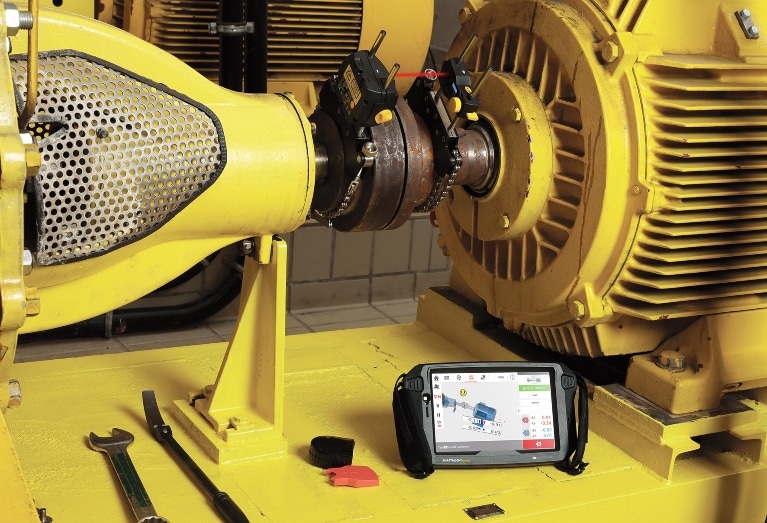Blown film manufacturing is plagued by costly issues such as product defects, downtime, and wasted film. All of these issues point to a single solution: precision alignment.
Production is fast-paced in the highly competitive blown film industry, putting manufacturers under constant pressure to meet quality and efficiency goals. When producing films for critical applications — be it food packaging, protective coverings, or heavy-duty industrial bags — any deviation from optimal performance can translate into excessive operating costs, missed deadlines, and a product that doesn’t meet customer expectations.
If you’re managing a blown film operation, you already know these pain points. What you need is a way to solve them efficiently with minimal disruption to your already tight schedules. This is where ParAlign, the market-leading roll alignment service, becomes a critical part of your maintenance toolkit.
Key Misalignment Challenges in Blown Film Lines
In blown film lines, each section has specific alignment needs, and even minor shifts can have a ripple effect on performance and disrupt the entire operation. Here’s a closer look at where these issues arise and how ParAlign’s precision technology can help.
Primary Nip Section
Misalignment at the primary nip, located at the top of the film tower, is a common source of production issues as it provides the foundation needed to stretch and flatten the molten film as it begins its journey down the production line. Even minor misalignment in this section can cause the rubber roll to pinch unevenly against the chrome roll, creating tension imbalances that lead to a host of problems, including:
- Wrinkles: Uneven tension stretches parts of the film while others slack, resulting in unwanted wrinkles that reduce the film’s quality.
- Uneven thickness: Misaligned rolls can cause variations in the film’s thickness, leading to rejected products further down the line.
- Bagginess: When tension isn’t evenly distributed, the film can sag, creating loose sections that affect how the product winds and performs in subsequent processes.
Keeping alignment within a tight +/- 0.015” tolerance in the nip section helps prevent the cascading effects of tension imbalances that can compromise quality across the entire production line. ParAlign makes this possible through its three ring-laser gyroscopes positioned in the x, y, and z axes to measure angular velocity in each direction.

These gyroscopes (also used in aerospace navigation systems, including NASA’s Space Shuttle program) measure roll, pitch, and yaw as it is swept across the circumference of each roll. As points are collected along the arc, corresponding software uses the length from bearing to bearing of each roll to determine the horizontal and vertical offsets.

The software then shares this information in clear graphics, so there is no need to do math or analysis on the spot. Clean, clear reports appear immediately, allowing mechanics to quickly visualize the misalignment and understand the exact adjustments needed to restore the nip’s alignment, keeping film tension balanced.
Secondary Nip Section
While the primary nip is critical for shaping film during production, the secondary nip plays an equally important role in controlling tension further down the line. Misalignment here can cause the film to shift horizontally, leading to cross-axis grinding and premature wear on bearings. Over time, this affects the film’s integrity and leads to costly downtime for repairs.
Traditional optical methods are often ineffective here, requiring a clear line of sight and frequent repositioning. Potential errors are introduced each time these devices are moved and reset, compounding inaccuracies over time. Here, ParAlign offers a clear advantage because it does not require a line of sight to take measurements. Because it measures a roll’s center axis in space and compares each center axis to a single reference, it is accurate from any distance, elevation, or location — from inches to several football fields away.
Furthermore, because it does not require a line of sight, ParAlign also doesn’t require sequential measuring in the same way that other technologies do. If it’s easiest to go from Point A to Point K to Point Z and then back to Point B, the ParAlign can do that. Other devices cannot.
This makes the ParAlign tool uniquely suited for this task and well-equipped for the blown film industry in general. Given that rollers are mounted over several stories, traditional line-of-sight alignment methods can’t get the job done like ParAlign.
Treater Rolls
Treater rolls are responsible for preparing film surfaces for downstream processes like printing, coupling, and adhesive coating by increasing surface tension. But when these rolls fall out of alignment, the treatment can become uneven, leading to adhesion issues that compromise product quality. This often results in wasted material and production delays, especially when entire batches need reworking.
Misalignment in the treater section can be particularly difficult to correct due to the rolls’ fixed mounting within the framework, allowing minimal room for adjustments. Often, the entire unit has to be shifted to find a sweet spot that addresses the problem — an inefficient and time-consuming solution. ParAlign helps streamline this by pinpointing precise misalignment locations, allowing targeted adjustments that minimize the need for extensive repositioning.
Winder Section
At the end of the production line, the winder converts extruded film into rolls of material. During the winding process, the film must preserve its properties and dimensions when these rolls are unwound and converted during other downstream processes. Alignment can suffer from the entire winding unit being twisted or shifted to one side, which can lead to common defects like telescoping rolls, crushed cores, and bagginess. These defects not only increase scrap but also lead to operational inefficiencies, as misaligned rolls cause problems in downstream processes.
In many operations, the winder unit may not allow for individual roll adjustment, making alignment even more complex. To meet the required +/- 0.030” tolerance, ParAlign service technicians will measure the entire unit, calculate the average offset, and adjust accordingly, leading to better tension control and product quality.
ParAlign has the ability to tackle alignment challenges at each stage of the blown film line. Each part of this process builds on the other, creating a powerful impact on production. In the next section, we’ll unpack the specific benefits that make complete alignment possible.
How ParAlign Solves Your Alignment Challenges
- Keeps downtime to a minimum: Given that production cycles in the blown film industry are short (often only four to six hours), and machines are down more often, alignments need to be completed quickly to avoid extended downtime and loss of revenue. The challenge grows when many machines require alignment at the same time, but ParAlign’s speed changes the game.
With the ParAlign tool, 100 to 200 rolls can be measured in a day and a blown film line can be measured from top to bottom in as little as 60 minutes. For many facilities, even one extra hour of downtime can mean thousands of dollars in lost revenue, making the ability to align quickly a critical factor in keeping operations profitable and on schedule. - Ensures precision without compromise: ParAlign’s measurement system provides accuracy down to 4 μm/m (0.05 mils/ft) — an exceptional level of precision. This clarity allows facility technicians to pinpoint exactly how much adjustment is needed for each roll. With precise data on hand, technicians can make adjustments confidently, backed by a clear view of alignment needs across the production line.
The following examples show typical alignment reports generated by our software, presenting a clear schematic of a machine’s alignment. Each circle represents a roller, with green indicating the operator side and red the drive side. The amount of red visible signals the degree of misalignment, making it easy to identify which rolls need adjustment. All rolls are compared against a common reference, marked in blue.


Left: Initial vertical and horizontal offsets Right: Final vertical and horizontal offsets
These reports not only simplify alignment adjustments but reinforce the precision needed to maintain consistency across each stage of production.
- Maintains high production quality: With ParAlign’s precise alignment recommendations, facilities can both prevent and correct persistent defects like asymmetric winding (long sides), uneven thickness, folds, creases, and web breaks. This level of accuracy doesn’t just support quality; it brings a new level of control to the production line, making every roll’s alignment a predictable factor, not a variable. Proactive alignment reduces waste, minimizes rework, and keeps production running smoothly.
A Game-Changer for Blown Film Production
Blown film production demands precision at every stage, and ParAlign makes alignment a critical part of production control. By giving technicians the tools they need to make precise adjustments, ParAlign ensures that each roll is perfectly positioned, turning alignment from a routine maintenance task into a key driver of predictability and profitability. With ParAlign, alignment is more than just a box to check — it’s a foundation for consistent, high-quality output day after day.

